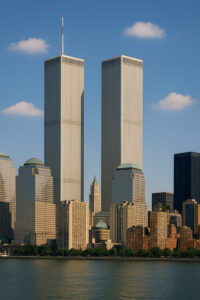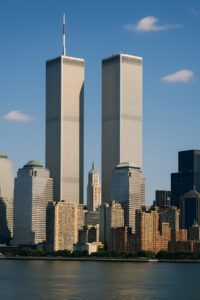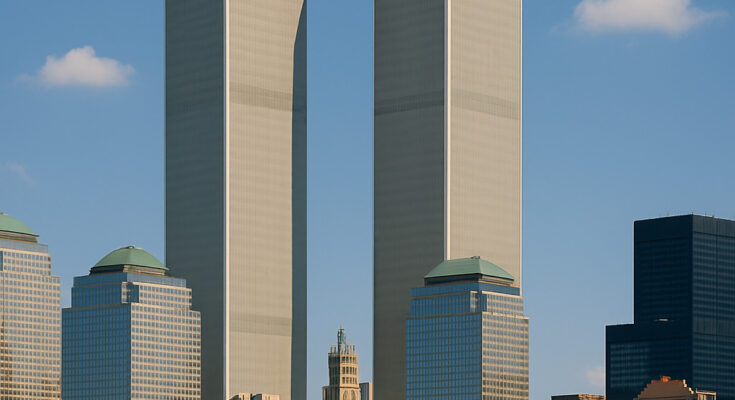World Trade Center Footage

Outline:
- Introduction
- Historical Background of the World Trade Center
- Events on September 11, 2001
- The Impact of the Attacks
- World Trade Center Footage and Its Importance
- Types of World Trade Center Footage
- News Footage
- Amateur Footage
- Government Footage
- Availability of World Trade Center Footage
- Media Sources
- Online Archives
- Documentary Films
- Analyzing World Trade Center Footage
- Investigative Purpose
- Academic Research
- Memorialization
- Controversies Surrounding World Trade Center Footage
- Conclusion
- FAQs
Article:
Introduction
The World Trade Center, located in Lower Manhattan, New York City, was a prominent symbol of global commerce and architectural excellence. However, on September 11, 2001, it became a tragic focal point in history. The terrorist attacks on the World Trade Center towers shook the world, and the subsequent footage captured during and after the events serves as a critical resource for understanding and commemorating the tragic day.
Historical Background of the World Trade Center
The World Trade Center complex was designed by renowned architect Minoru Yamasaki and officially opened on April 4, 1973. It consisted of two towers, often referred to as the Twin Towers, which stood at a staggering 110 stories each. These iconic buildings quickly became a symbol of New York City’s skyline and a bustling center for international trade.
Events on September 11, 2001
On the morning of September 11, 2001, a series of coordinated terrorist attacks orchestrated by the extremist group al-Qaeda shook the United States. Two commercial airliners hijacked by terrorists were flown into the Twin Towers, causing catastrophic damage and ultimately leading to their collapse. The world watched in disbelief as the towers crumbled and countless lives were lost.
The Impact of the Attacks
The attacks on the World Trade Center had a profound impact on multiple levels. Beyond the immediate loss of life and physical destruction, the event forever changed the global political landscape, leading to increased security measures, the initiation of wars, and a heightened sense of vulnerability. The attacks also sparked a wave of unity, resilience, and support for the victims and their families.
World Trade Center Footage and Its Importance
World Trade Center footage plays a crucial role in preserving the historical record of the tragic events that unfolded on September 11, 2001. This footage offers a visual account of the attacks, capturing the shock, devastation, and heroic acts of individuals involved. It allows future generations to witness the impact of terrorism and the resilience of humanity.
Types of World Trade Center Footage

There are various types of World Trade Center footage available, each providing a unique perspective on the events of September 11th:
- News Footage: News organizations worldwide captured and broadcasted live footage of the attacks, documenting the immediate aftermath and the ongoing rescue and recovery efforts.
- Amateur Footage: Ordinary citizens who were present during the attacks or lived in close proximity filmed the events using personal cameras, creating a raw and unfiltered account of the tragedy.
- Government Footage: Government agencies, such as the Federal Emergency Management Agency (FEMA) and the National Institute of Standards and Technology (NIST), collected and documented footage forfurther investigation and analysis.
Availability of World Trade Center Footage
World Trade Center footage can be accessed through various sources, ensuring its preservation and accessibility for research, education, and memorialization purposes:
- Media Sources: News outlets and media organizations have archived their coverage of the World Trade Center attacks, making it accessible through their websites or dedicated online platforms.
- Online Archives: Several online archives specialize in collecting and curating World Trade Center footage. These platforms provide a comprehensive collection of videos, allowing researchers and the public to explore the events from different angles.
- Documentary Films: Filmmakers have produced numerous documentaries that incorporate World Trade Center footage, offering in-depth analysis, interviews, and narratives surrounding the attacks and their aftermath.
Analyzing World Trade Center Footage
World Trade Center footage serves multiple purposes in its analysis:
- Investigative Purpose: Researchers, historians, and forensic experts analyze the footage to gain insights into the events and the structural behavior of the buildings during the attacks. This analysis contributes to the development of safety measures and the prevention of future disasters.
- Academic Research: Scholars and academics study World Trade Center footage to examine the social, political, and cultural impact of the attacks. It provides valuable material for understanding the psychological, economic, and security consequences of such events.
- Memorialization: World Trade Center footage is used in memorials, exhibitions, and educational programs to commemorate the victims, honor the first responders, and ensure that the events of September 11, 2001, are never forgotten.
Controversies Surrounding World Trade Center Footage
As with any significant historical event, controversies and conspiracy theories have emerged around the World Trade Center footage. Some individuals question the authenticity or accuracy of certain videos, leading to debates and alternative narratives. It is important to approach such controversies with critical thinking and rely on verified sources and expert analysis.
Conclusion
The World Trade Center footage provides a visual account of one of the most tragic events in modern history. It captures the magnitude of the attacks, the resilience of humanity, and the ongoing importance of remembering and learning from the events of September 11, 2001. The availability and analysis of this footage contribute to our understanding of the past and help shape a better future.
FAQs
- Q: Can I find World Trade Center footage from different angles and perspectives?
- A: Yes, various sources offer footage captured from different angles, including news broadcasts, amateur recordings, and documentaries.
- Q: Are there any restrictions on accessing World Trade Center footage?
- A: While most footage is publicly accessible, some content may be subject to copyright or restricted for specific purposes.
- Q: How can World Trade Center footage be used for educational purposes?
- A: World Trade Center footage serves as a valuable resource for educational institutions, allowing students to engage with history, explore the impact of terrorism, and foster critical thinking skills.
- Q: Are there any official archives specifically dedicated to preserving World Trade Center footage?
- A: Yes, organizations such as the National September 11 Memorial & Museum maintain comprehensive archives of World Trade Center footage.
- Q: Can World Trade Center footage be used in legal proceedings?
- A: Yes, World Trade Center footage has been utilized as evidence in legal proceedings related to the attacks, investigations, and compensation claims.


